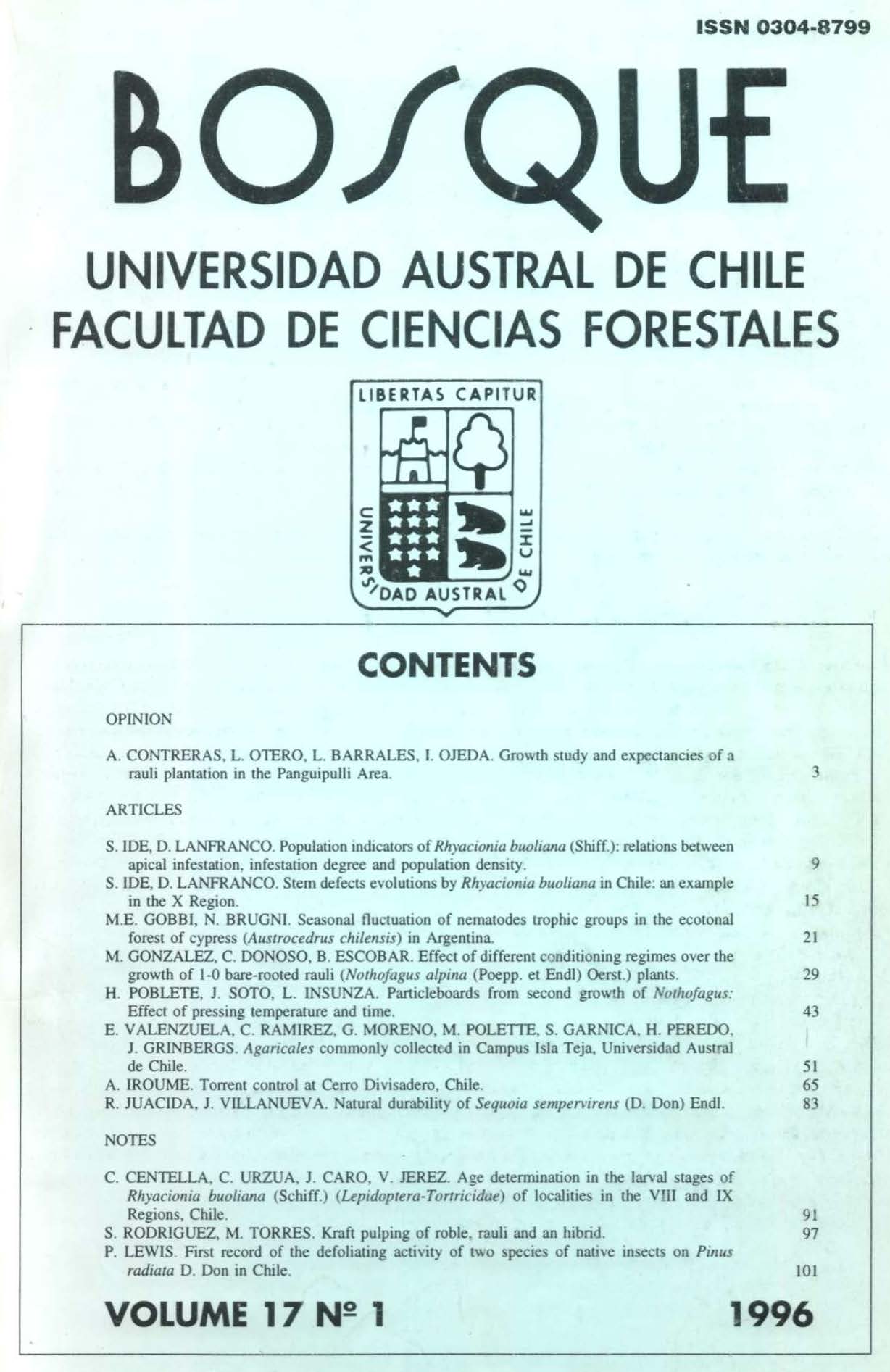Natural durability of Sequoia sempervirens (D. Don) Endl.
Main Article Content
Abstract
This study determined the durability of Sequoia sempervirens ((D. Don) Endl.) wood grown in Chile, using an accelerated process utilizing de attack fungi Gloephyllum trabeum (Pers.) during a growing period of four months in optimal conditions. The variables tested were Sequoia sapwood and heartwood. Samples were tested with and without extraction in hot water. The method employed was proposed by the Material Test Federal Office, BAMBerlin (Kerner-Gang, 1984). The tested material came from seven Sequoia trees grown in a 38 year old stand on the Voipir Tract in Villarrica (IX Region, Chile). With the obtained weight loss results, the durability class of the tested wood was obtained according to the classification proposed by Findlay. The studied Sequoia was classified as moderately resistant with an average weight loss of 27.53% in natural heartwood, 33.15% in natural sapwood, 33.65% in extracted sapwood and 30.32% in extracted heartwood. A control lot of Radiata Pine presented a 33.67% weight loss. The extracted Sequoia wood is less resistant against decay than the natural wood because of the presence of hot-water soluble extractives in the sapwood (2.61%) and in the heartwood (7.95%).

